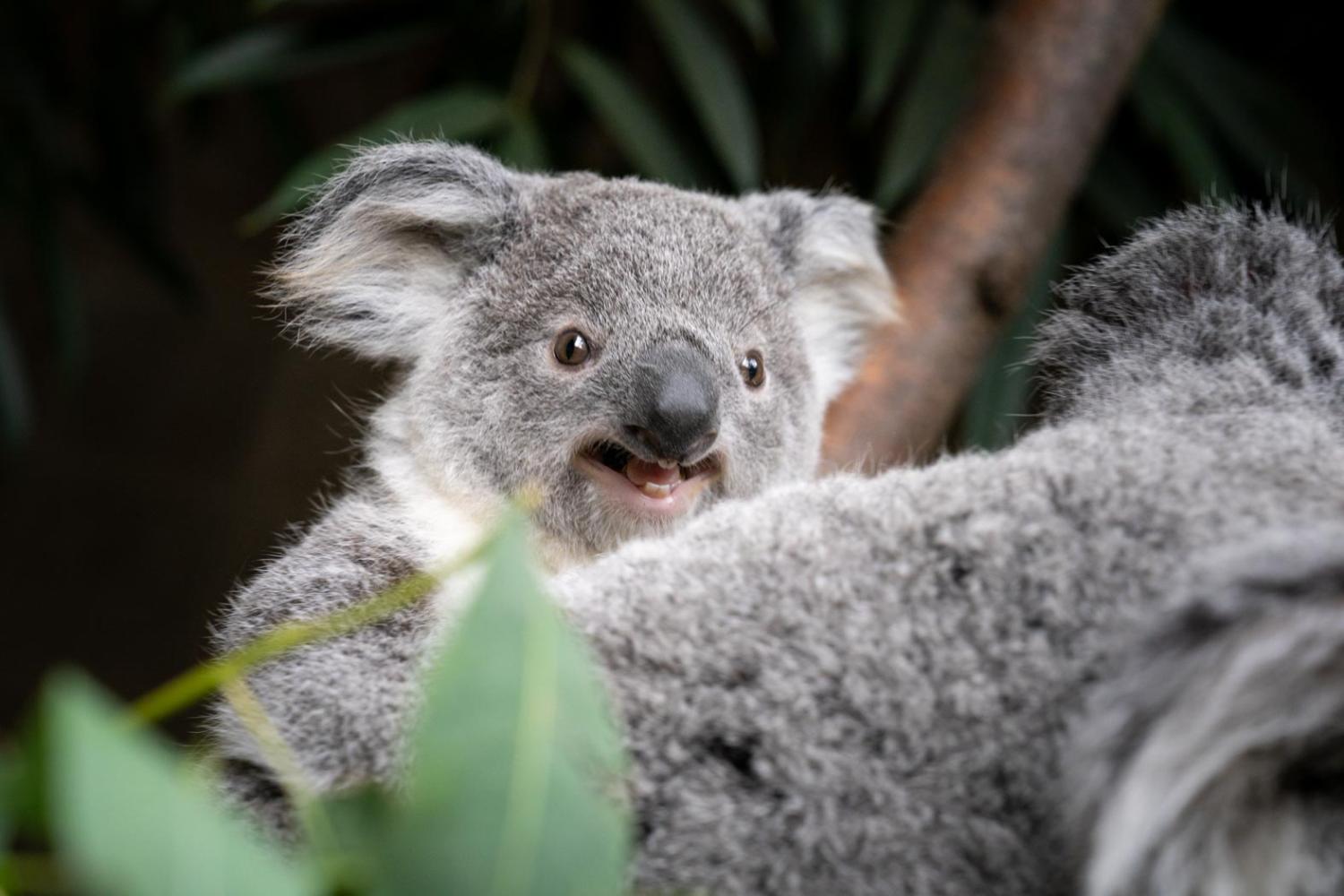
The Enchanting World of Koala Babies: A Journey into the Cuteness and Care of Joey Koalas
In the heart of Australia’s eucalyptus forests, there exists a captivating creature that has stolen the hearts of wildlife enthusiasts worldwide: the koala. These adorable marsupials are renowned for their cuddly appearance, gentle nature, and unique adaptations that allow them to thrive in their arboreal habitat. Among the most captivating aspects of koala life is the birth and development of their young, known as joeys.
The Birth of a Joey
The gestation period for a koala is approximately 35 days, one of the shortest among mammals. After this brief period, a tiny, underdeveloped joey is born, weighing a mere 0.5 grams and measuring just 2 centimeters in length. At this stage, the joey is essentially a miniature version of its mother, with large eyes, a rudimentary nose, and tiny limbs.
The Joey’s Journey
Immediately after birth, the joey instinctively crawls through its mother’s thick fur and into her pouch, where it will spend the next six to seven months. The pouch provides a warm, protected environment for the developing joey, and it also contains mammary glands that produce milk specifically tailored to the joey’s nutritional needs.
Within the pouch, the joey attaches itself to one of its mother’s teats and begins to suckle. The milk is rich in fat and protein, providing the joey with the essential nutrients it needs to grow and develop. As the joey grows, it gradually emerges from the pouch for short periods, exploring its surroundings and interacting with its mother.
The Development of a Joey
During the first few months of life, the joey’s development is rapid. Its eyes open, its limbs grow stronger, and its fur begins to thicken. By the time it is four months old, the joey is fully weaned and begins to eat eucalyptus leaves alongside its mother.
As the joey continues to grow, it spends more and more time outside the pouch, venturing into the surrounding trees and learning to climb and forage. By the age of six to seven months, the joey is fully independent and ready to leave its mother’s care.
The Role of the Mother
Koala mothers play a crucial role in the development and survival of their young. They provide constant care and protection, ensuring that the joey has access to food, warmth, and shelter. Mothers also teach their joeys essential survival skills, such as how to climb trees, forage for food, and avoid predators.
The bond between a koala mother and her joey is incredibly strong. Mothers are known to carry their joeys on their backs for extended periods, providing them with a sense of security and comfort. They also communicate with their joeys through a series of vocalizations, including grunts, clicks, and whistles.
Threats to Koala Babies
Despite their adorable appearance and gentle nature, koala babies face a number of threats in the wild. Habitat loss, deforestation, and climate change are all major concerns, as they reduce the availability of food and shelter for koalas. Additionally, koalas are vulnerable to predators such as dingoes, eagles, and pythons.
Conservation Efforts
Recognizing the importance of protecting koala babies and their habitat, conservation organizations are working tirelessly to ensure their survival. These efforts include habitat restoration, captive breeding programs, and public education campaigns aimed at raising awareness about the plight of koalas.
Conclusion
Koala babies are truly remarkable creatures, embodying the beauty and fragility of the natural world. Their journey from tiny, underdeveloped joeys to independent individuals is a testament to the resilience and adaptability of these iconic marsupials. By understanding the challenges they face and supporting conservation efforts, we can help ensure that future generations can continue to marvel at the enchanting world of koala babies.
